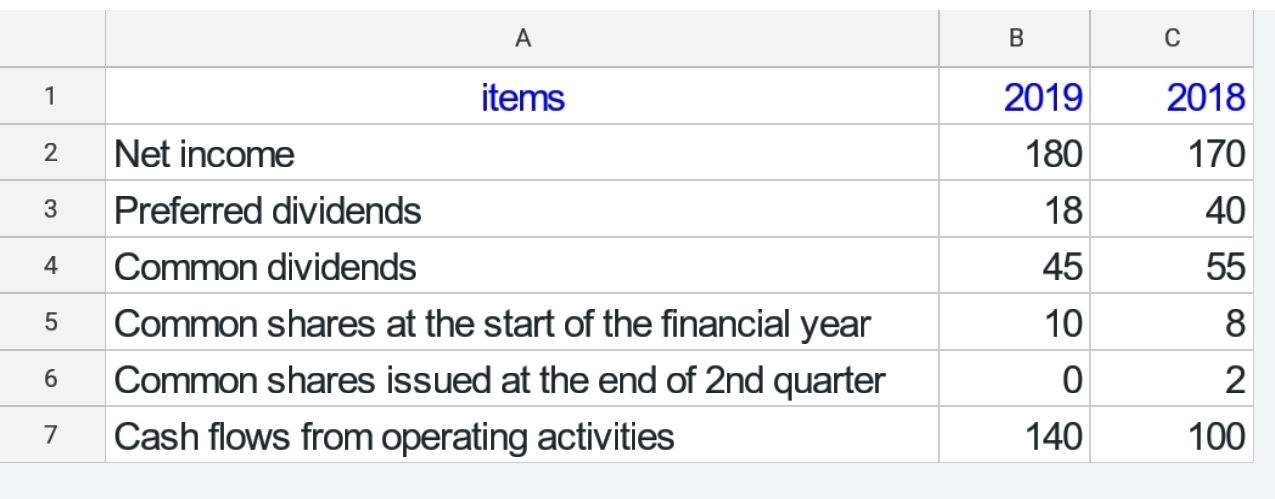Home>Finance>How To Analyze Multifamily Investment Opportunities?


Finance
How To Analyze Multifamily Investment Opportunities?
Modified: February 21, 2024
Learn how to analyze multifamily investment opportunities and make sound financial decisions in the real estate industry with our comprehensive finance guide.
(Many of the links in this article redirect to a specific reviewed product. Your purchase of these products through affiliate links helps to generate commission for LiveWell, at no extra cost. Learn more)
Table of Contents
Introduction
When it comes to investing in real estate, multifamily properties have become increasingly popular due to their potential for high returns and stable income streams. However, analyzing multifamily investment opportunities requires a careful and systematic approach to ensure you make informed decisions and maximize your profits.
In this article, we will guide you through the essential steps to effectively analyze multifamily investment opportunities. By following this comprehensive process, you can mitigate risks, identify profitable properties, and develop a solid investment strategy.
Market conditions, location analysis, property analysis, financial assessment, profitability evaluation, and exit strategy planning are all vital components of the multifamily investment analysis process. Each step is crucial in understanding the potential of a property and determining whether it aligns with your investment goals.
Before delving into the specific steps, it’s important to note that analyzing multifamily investment opportunities requires a deep understanding of the finance industry and real estate market. It’s recommended that you consult with a knowledgeable professional, such as a real estate agent or financial advisor, to ensure you have access to accurate and up-to-date information.
With that said, let’s explore the key steps to effectively analyze multifamily investment opportunities.
Market Research
Conducting thorough market research is the foundation of analyzing multifamily investment opportunities. This step helps you understand the current market conditions, trends, and demand for rental properties in a particular area.
Start by examining the overall economic indicators of the region, such as population growth, employment rates, and the business climate. These factors contribute to the demand for rental properties and can indicate the stability and potential profitability of a multifamily investment.
Additionally, analyze the local housing market to understand rental trends and competition. Look at vacancy rates, rental prices, and occupancy rates in the area. This information will give you insights into the rental market dynamics and help you estimate potential rental income for your investment property.
Furthermore, study demographic data to identify the target audience for your multifamily property. Consider factors like age groups, income levels, and lifestyle preferences. This will allow you to tailor your property to the needs and desires of potential tenants, increasing its appeal and occupancy rate.
Another crucial aspect of market research is analyzing the supply and demand dynamics. Look for any upcoming developments or new construction projects in the area that may affect the rental market. Assess the competition by evaluating the number of multifamily properties in the vicinity and their amenities and rental rates.
Engaging with local real estate professionals, such as property management companies and real estate agents, can provide valuable on-the-ground insights. They can share their knowledge of the market, current rental trends, and investment opportunities in the area.
Remember, market research is an ongoing process. Continuously monitor market conditions and stay informed about any shifts in the local economy or rental market. This will help you make informed decisions and adapt your investment strategy accordingly.
Location Analysis
The location of a multifamily property is a critical factor in its long-term success and profitability. Conducting a thorough location analysis is essential to ensure your investment is situated in a desirable and sustainable area.
Start by evaluating the neighborhood where the property is located. Look for indicators of a safe and attractive community, such as low crime rates, good schools, convenient access to amenities, and well-maintained public spaces. These factors contribute to the overall desirability of the location and can attract quality tenants.
Examine the proximity of the property to essential services and amenities, including grocery stores, shopping centers, healthcare facilities, public transportation, and recreational areas. Properties located near these amenities tend to be more attractive to tenants, resulting in high occupancy rates and potential rental income growth.
Consider the job market in the area. A strong and diverse employment base provides stability and potential for rental demand. Research local industries, major employers, and the unemployment rate to gauge the economic health of the location.
Transportation infrastructure is another crucial factor to consider. Properties with easy access to highways, public transportation, and major thoroughfares offer convenience to tenants and increase the property’s appeal.
Future development plans and infrastructure projects in the area can also impact the property’s value and desirability. Research any upcoming construction or revitalization projects that may enhance the location’s attractiveness and potential for appreciation.
Lastly, analyze the rental market in the specific location. Evaluate rental rates, vacancy rates, and historical rental growth rates in the area. This will give you insights into the potential rental income and overall profitability of your investment.
By conducting a comprehensive location analysis, you can identify areas with high growth potential, minimize risks, and select multifamily properties in prime locations that attract quality tenants and ensure long-term profitability.
Property Analysis
The next step in analyzing multifamily investment opportunities is conducting a thorough property analysis. This involves evaluating the physical condition, amenities, and potential for value-added improvements of the property.
Start by assessing the overall condition of the building, including its structural integrity, plumbing, electrical systems, and HVAC. Hire a professional inspector to thoroughly examine the property and provide a detailed report. This will help you identify any potential issues or costly repairs that may affect your investment.
Take note of the property’s curb appeal and exterior condition. A well-maintained and visually appealing property attracts tenants and can command higher rental rates.
Consider the unit mix of the property. Analyze the number of units, their sizes, layouts, and bedroom configurations. Understanding the composition of the property will help you determine the target market and potential rental income.
Assess the amenities offered by the property. Are there any on-site amenities such as a swimming pool, fitness center, or laundry facilities? These features can enhance the property’s attractiveness and potentially command higher rental rates.
Additionally, evaluate the parking situation. Sufficient parking spaces and easy access to parking are desirable features for tenants, particularly in urban or densely populated areas.
Consider the potential for value-added improvements. Are there any underutilized spaces that can be converted into additional units or amenities? Are there opportunities to upgrade or renovate units to increase rental rates? Identifying these opportunities can help you enhance the property’s value and rental income.
Analyze the property’s current and projected operating expenses, including utilities, property management fees, insurance, property taxes, and maintenance costs. This will help you estimate the net operating income (NOI) and evaluate the property’s financial viability.
By conducting a comprehensive property analysis, you can assess the physical condition, amenities, and potential for value enhancement of the multifamily property, helping you make an informed investment decision.
Financial Analysis
Performing a thorough financial analysis is crucial when analyzing multifamily investment opportunities. This step involves evaluating the financial aspects of the property to determine its potential profitability and return on investment.
Start by gathering all relevant financial documents related to the property, including income statements, rent rolls, operating expenses, and tax returns. These documents will provide a clear snapshot of the property’s financial performance.
Calculate the property’s gross potential income by multiplying the total number of units by the market rental rate. Deduct any vacancy allowance to estimate the effective gross income.
Next, assess the property’s operating expenses, including property management fees, utilities, insurance, property taxes, repairs, and maintenance costs. Carefully review these expenses to identify any areas where cost savings can be achieved.
Determine the net operating income (NOI) by subtracting the operating expenses from the effective gross income. The NOI is a crucial figure in evaluating the property’s cash flow potential and can be used to calculate the property’s capitalization rate (cap rate).
Understand the financing options available to you and calculate the potential mortgage payments based on the loan terms, interest rate, and down payment requirements. This will help you determine the cash flow and return on investment for different financing scenarios.
Calculate the cash-on-cash return by dividing the annual cash flow by the initial cash investment. This metric provides insights into the property’s return on the amount of cash invested and helps you compare different investment opportunities.
Consider the potential for appreciation by analyzing the historical and projected growth in property values in the area. This can positively impact your investment’s overall profitability and return.
Evaluate the property’s financial metrics, such as the debt service coverage ratio (DSCR), the cash flow ratio, and the capitalization rate. These indicators give you a comprehensive view of the property’s financial health and performance.
By conducting a detailed financial analysis, you can accurately assess the property’s potential cash flow, return on investment, and overall financial viability. This information will guide your decision-making process and help you choose the most profitable multifamily investment opportunities.
Profitability Assessment
Assessing the profitability of a multifamily investment opportunity is crucial to ensure it aligns with your financial goals and expectations. This step involves analyzing various factors that impact the potential return on investment and cash flow of the property.
Start by evaluating the market rental rates in the area and comparing them to the potential rental income of the property. Look for properties that offer strong rental demand, allowing you to maintain high occupancy rates and potentially increase rental rates over time.
Consider the operating expenses associated with the property, including property management fees, utilities, insurance, maintenance, and repairs. Ensure that these expenses are manageable and leave room for positive cash flow.
Analyze the financing options available for the property and calculate the mortgage payments, interest costs, and any potential financing fees. This will help you determine the impact of financing on the cash flow and return on investment.
Evaluate the potential for value appreciation over time. Historical property value appreciation rates in the area can give you insights into the property’s potential resale value and long-term profitability. Keep in mind that appreciation is not guaranteed and can be influenced by various factors such as market conditions and location.
Consider any value-added opportunities that exist within the property. These could include renovating units, upgrading amenities, or optimizing rental rates. By identifying and implementing value-added strategies, you can enhance the property’s profitability and increase its overall value.
Assess the potential tax benefits associated with the investment. Consult with a tax professional to understand any tax deductions or benefits you may be eligible for, such as depreciation, interest deductions, or capital gains tax advantages.
Examine the potential for long-term income growth and stability. Consider factors such as job growth, population trends, and the overall economic outlook of the area. Investing in locations with a strong economic foundation can provide a stable income stream and potential for long-term profitability.
Consider the risk factors associated with the investment, such as potential market fluctuations, changes in rental demand, or unexpected expenses. Conduct a risk assessment and develop contingency plans to mitigate these risks and safeguard your profitability.
By analyzing the profitability factors outlined above, you can assess the potential return on investment, cash flow, and overall profitability of multifamily investment opportunities. This analysis will help you make informed decisions and choose investments that align with your financial objectives.
Risk Assessment
Conducting a comprehensive risk assessment is a critical step in analyzing multifamily investment opportunities. Understanding and mitigating potential risks are essential to protecting your investment and ensuring its long-term success. Here are key factors to consider in your risk assessment:
Market Risk: Evaluate the overall stability and growth potential of the local real estate market. Market fluctuations, economic downturns, and changes in rental demand can impact the profitability of your investment. Stay informed about market trends and consult with professionals to assess the market risk accurately.
Tenant Risk: Assess the creditworthiness and stability of potential tenants. Conduct thorough tenant screening processes to minimize the risk of late or missed rental payments. Implement strict lease agreements and have contingency plans in place for tenant turnover to minimize vacancy periods.
Property Condition: Consider the physical condition of the property and its potential for costly repairs or renovations. Conduct a thorough inspection to identify any existing issues that may affect the property’s value or rental income. Factor in ongoing maintenance costs to ensure the property remains attractive to tenants and minimizes potential risks.
Financial Risk: Analyze the cash flow and financing structure of the investment. Assess the impact of vacancy rates, operating expenses, and mortgage payments on the property’s profitability. Ensure you have contingency plans for unexpected expenses or changes in rental demand that could affect your cash flow.
Regulatory and Legal Risk: Familiarize yourself with local laws and regulations pertaining to multifamily properties. Ensure that you comply with all zoning restrictions, rental regulations, and safety codes. Failure to do so can result in legal consequences and financial penalties that can jeopardize your investment.
Insurance Risk: Evaluate the property’s insurance coverage. Ensure that you have adequate insurance policies in place to protect against potential liabilities, such as property damage, accidents, or natural disasters. Stay up to date with insurance requirements and regularly review your coverage to mitigate insurance-related risks.
Mitigation Strategies: Develop contingency plans for potential risks and have mitigation strategies in place. This can include maintaining reserve funds for unexpected expenses, having a solid marketing plan to minimize vacancy periods, and maintaining positive relationships with tenants and service providers to address issues promptly.
Consulting with professionals, such as real estate attorneys, insurance agents, and property managers, can provide valuable insights and guidance in identifying and mitigating potential risks. Their expertise can help you navigate complex legal and operational challenges, reducing the overall risk associated with your investment.
Remember, risk assessment is an ongoing process. Continuously monitor market conditions, property performance, and regulatory changes to identify any emerging risks and make necessary adjustments to protect your investment.
Exit Strategy Planning
When analyzing multifamily investment opportunities, it is crucial to have a well-defined exit strategy in place. An exit strategy outlines your plan for selling or transitioning out of your investment property when the time is right. Here are key considerations for exit strategy planning:
Market Timing: Monitor market conditions and assess when it may be advantageous to sell your investment property. Consider factors such as property appreciation, rental demand, and overall economic conditions. Having a keen understanding of the market will allow you to determine the optimal time to execute your exit strategy.
Financial Goals: Clearly define your financial goals and objectives for the investment. Determine your desired return on investment, equity growth, or cash flow targets. These goals will guide your decision-making process and help you select the right exit strategy.
Sell or Hold: Evaluate whether selling the property or holding onto it for an extended period aligns with your financial goals. Consider factors such as potential appreciation, rental income, and tax implications. Deciding whether to hold onto the property for long-term cash flow or sell for a lump sum profit depends on your investment strategy and future plans.
Market Analysis: Conduct a thorough market analysis to identify potential buyers or investment groups interested in multifamily properties. Understanding the market demand and target audience for your property will help you position it effectively to attract potential buyers when the time comes.
Financing Considerations: Review your current financing arrangements and assess any potential hurdles or restrictions that may impact your exit strategy. Ensure you have a clear understanding of any prepayment penalties, loan assumptions, or refinancing options available to you. Plan accordingly to maximize your profitability during the exit process.
Tax Implications: Consult with a tax professional to understand the tax implications of your exit strategy. Capital gains taxes, depreciation recapture, or other tax liabilities may apply when selling your investment property. Understanding these implications in advance will allow you to structure your exit strategy to minimize tax obligations.
Contingency Plans: Develop contingency plans in case your initial exit strategy doesn’t go as planned. Consider alternative options such as refinancing, leasing the property, or transitioning into a different investment strategy. Flexibility and adaptability are key when it comes to executing your exit strategy.
Exit strategy planning should be an integral part of your overall investment strategy from the outset. Regularly review and update your exit strategy to ensure it aligns with your changing financial goals and market conditions. Being prepared and proactive will help you achieve a smooth transition and maximize your returns when exiting your multifamily investment.
Conclusion
Analyzing multifamily investment opportunities requires a systematic approach to ensure you make well-informed and profitable investment decisions. By following a comprehensive process that includes market research, location analysis, property analysis, financial assessment, profitability evaluation, risk assessment, and exit strategy planning, you can increase your chances of success in the real estate market.
Thorough market research allows you to understand the current trends, demand, and overall viability of the rental market. Location analysis ensures you select properties in desirable areas with amenities, conveniences, and potential for long-term growth. Property analysis helps you evaluate the physical condition, potential value-added improvements, and amenities of the property. Financial analysis provides insights into the financial viability and potential return on investment, while profitability assessment considers rental income, expenses, and appreciation potential.
Risk assessment is crucial to identifying and mitigating potential risks that could negatively impact your investment. Developing a solid exit strategy is equally important to determine your plan for selling or transitioning out of the investment and maximizing your returns.
It’s important to note that analyzing multifamily investment opportunities requires a deep understanding of the finance industry and the real estate market. Consulting with professionals, such as real estate agents, financial advisors, and property managers, is recommended to ensure you have access to accurate and up-to-date information.
Remember, no investment is without risks. However, by conducting thorough analyses, staying informed, and making strategic decisions, you can position yourself for success in the multifamily real estate market. Stay proactive, adapt to changing market conditions, and continuously evaluate and adjust your investment strategies as needed.
By following the steps outlined in this article and staying committed to ongoing research and analysis, you can confidently navigate the multifamily investment landscape and make profitable investment decisions.














